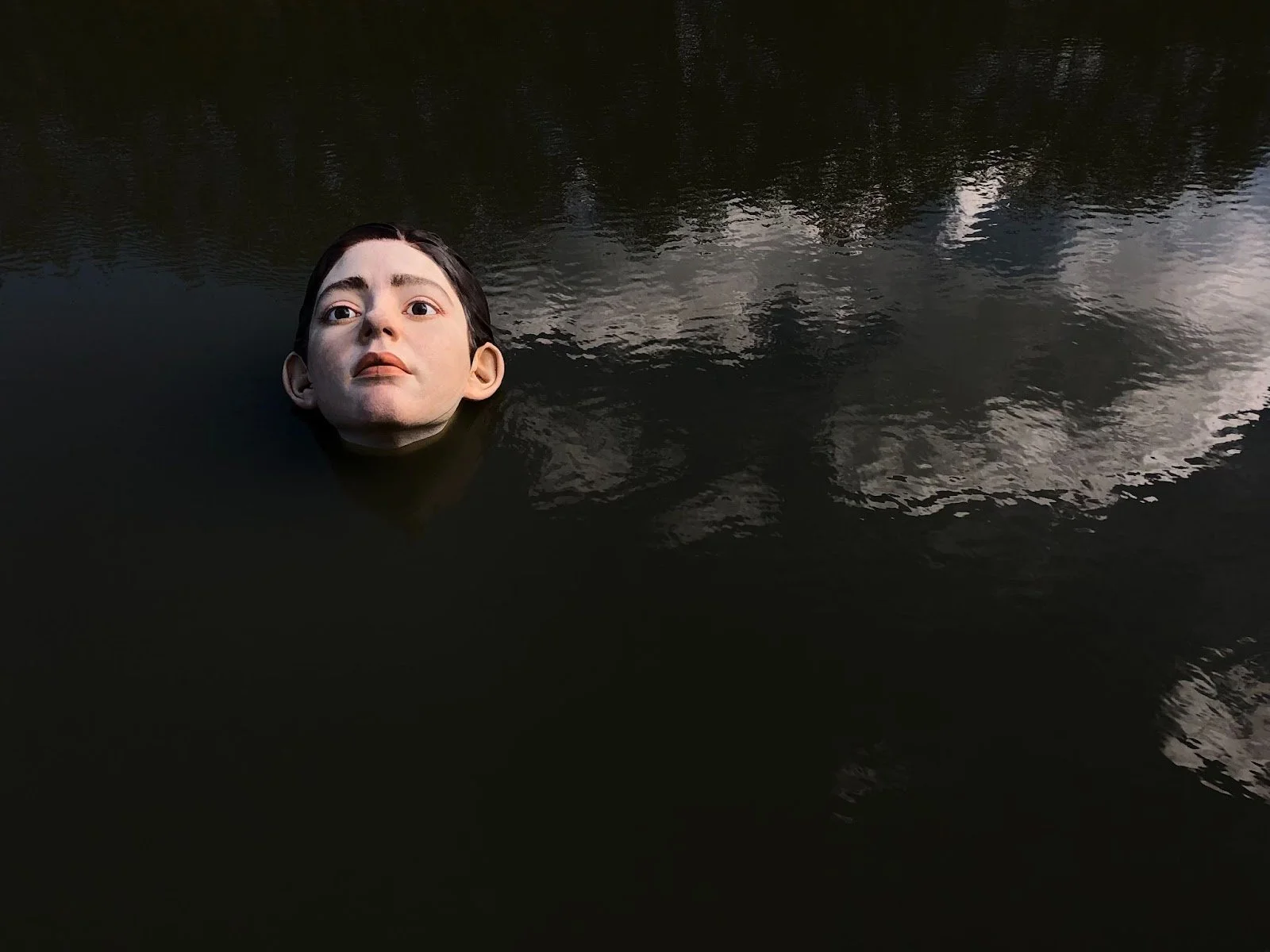Mexican artist Rubén Orozco Loza’s latest installation of a drowning woman in Bilbao, Spain, incites international discussions of intergenerational equity in climate litigation.
Bihar. Rubén Orozco. CC BY 1.0.
Since appearing in the water of Bilbao’s River Nervión unannounced, an eerie statue of a drowning girl has mystified the people of the Spanish city. The figure was taken by boat in the middle of the night on Sept. 23 and placed quietly in the water. When residents awoke the following day, they were startled to see a young woman’s face partially submerged with her eyes and mouth tilted up, reaching for air. The piece has inspired international discussions about intergenerational equity and climate change. This issue is a big topic among European youth who, in recent years, organized school walkouts and protests.
Despite her passive expression, viewers have described the image to invoke different feelings as the tides rise and fall. A visitor viewing the statue, Triana Gil, told Reuters that “At first it gave me a feeling of stress when more of the face was out of the water, but now to me she communicates sadness, a lot of sadness … She doesn't even look worried, it’s as if she is letting herself drown.”
Rubén Orozco Loza, a hyperrealist artist from Mexico, created the sculpture. The installation, commissioned by the BBK Foundation, is titled “Bihar: Choosing Tomorrow.” In an email to Insider, Loza described the piece as “a reflection on the decisions we make for future generations.” The artist told the Spanish news site, Nius, that the goal of his work is for people to consider that “their actions can sink us or keep us afloat.”
With the help of his wife, Loza spent three months completing the piece in Mexico. The artwork is over 6.5 feet tall and weighs around 3.5 tons. It had to be flown to Spain in eight separate pieces and re-assembled there before it was brought to the river by boat.
The young girl stands still as tides rise past her ears and over her head, then slowly back down, unveiling her upward staring eyes and calm expression. This cycle repeats over and over, day after day. Her presence isn’t just unsettling residents but inspiring discussions around an uneasy topic that affects the global population: climate change.
A few days before the statue’s grand appearance in the river, the Science Journal published a report about intergenerational inequalities in exposure to extreme climate events. The paper found that children born in 2020 will experience up to seven times more extreme climate events like heat waves, wildfires, droughts, floods, hurricanes and tsunamis than someone born 40 years ago. This raises the important issue of intergenerational equity in climate litigation, which has fueled recent climate protests led by millions of young people in at least 110 countries in the last few years.
Loza told Insider that “‘Bihar: Choosing Tomorrow’ is an exercise in pausing, looking at what's changing, and above all, a future reflection of what can happen if we continue to bet on unsustainable models.” His artwork serves as a medium to contemplate the question of how future generations will experience a world impacted by the actions of people today. Loza added, “I hope that this piece helps people reflect and see how, like the sculpture, we can get to a point where we are no longer afloat.”
Claire Redden
Claire is a freelance journalist from Chicago, where she received her Bachelor’s of Communications from the University of Illinois. While living and studying in Paris, Claire wrote for the magazine, Toute La Culture. As a freelancer she contributes to travel guides for the up and coming brand, Thalby. She plans to take her skills to London, where she’ll pursue her Master’s of Arts and Lifestyle Journalism at the University of Arts, London College of Communication.


